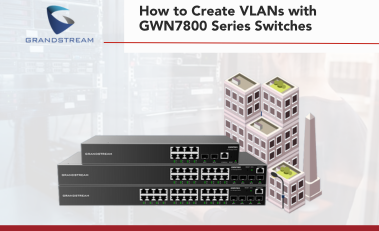It’s Crowded in Here: The Importance of MIMO in a WiFi Dominated World
Internet used to be a measly dial-up connection that only a handful of families had access to at home. Now dial up is no longer in existence, and just about any device you can think of comes WiFi enabled, from refrigerators to door locks. We use more WiFi than ever before and expect to have it while grocery shopping, while at work, and even on airplane trips.
With the rise of WiFi-enabled devices and the increasing dependence on the need for Internet, our desire for a fast, reliable connection has grown. But with so many devices in one room demanding WiFi, how can we ensure those demands are met?
First, let’s discuss how traditional wireless works. A signal is sent to the device you’re using from a router or access point, if you have multiple devices on an 802.11n connection they are most likely “fighting” for data. This results in each device getting a slower, poor connection that isn’t efficiently distributed. Much like a garden hose with multiple punctures in it, the water will still flow through but it will be slow and leak over the place. The Institute of Electrical and Electronics Engineers (IEEE) solved this problem when they released the 802.11ac Standard that included MIMO for wireless devices.
What’s MIMO, anyway?
On a simple level Multiple Input, Multiple Output (MIMO), pronounced (mee-mo), refers to antenna technology that allows the sending of more than one data signal over the same radio channel. In reference to wireless, MIMO refers to the use of multiple antennas both at the transmitter and the receiver. Your cell phone is most likely a 1×1 MIMO device, meaning it can only send and receive data via a single stream, while most computers are 2×2 MIMO. Think of it as if you were filling a pool with water (but this hose doesn’t have holes), if you have one hose the pool will still get filled, just much slower than if you had 2 or 3 hoses. In this sense, MIMO provides a much faster connection to your various devices. The more streams sending and receiving data, the less congestion and the faster the speed.
Ok, so theoretically if MIMO 3×3 has three “antennas” this must be the best, right? So why then do the GWN7600 and GWN7600LR (coming soon) utilize a 2×2? The technology in these devices is slightly different and comes as an advancement of 802.11ac Wave 2. These access points use Multi Use-Multiple Input, Multiple Output, pronounced (moo-mee-mo).
Ok, so what’s MU-MIMO?
Multi-use means that there are multiple antennas, but instead of sending multiple signals to the same direction (MIMO for example), they can send multiple signals to different stations. The hose example above still applies, 3 hoses will certainly fill a pool faster but there are additional benefits with the use of MU-MIMO. For example, in an office scenario, where each employee has 3 or four devices— a laptop, work cell phone, personal phone, and a tablet, MU-MIMO ensures a faster connection with shorter active radio time, saving the battery life of these multiple devices. This is because the access point is able to provide multiple connections to multiple devices at the same time, without the drawbacks of sharing. Unlike 802.11n the devices don’t need to “fight” for data since it’s distributed in an efficient manner.
Grandstream’s GWN7600 and the upcoming GWN7600LR Outdoor Access Point both utilize 2×2 MU-MIMO keeping you connected wherever you are (even if you’re sitting at the pool).
Want to learn more about Grandstream’s networking solutions, including the GWN7600, GWN7610, and upcoming GWM7600LR? The team at 888VoIP is here to help. Contact our sales representatives at 888-864-7786 to learn more about including these solutions as part of your product offering.
This article was written by Kate Clavet, Content Marketing Specialist for Grandstream Networks, Inc.


